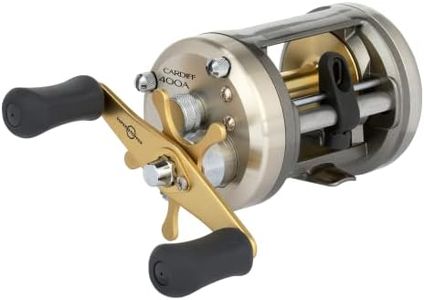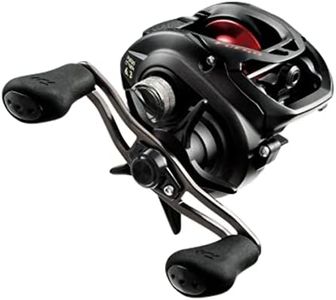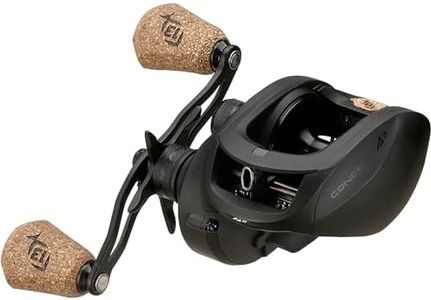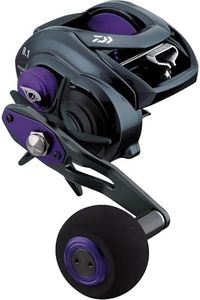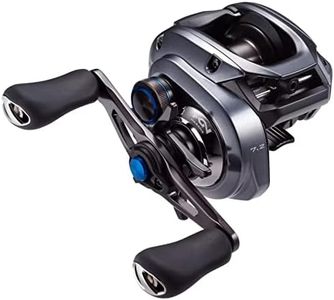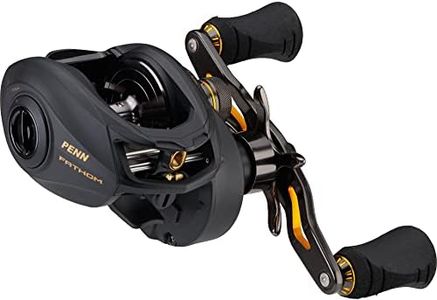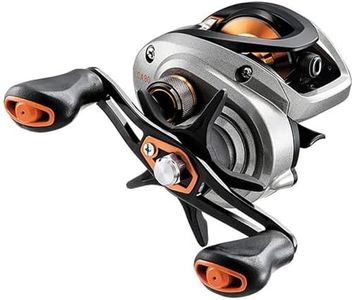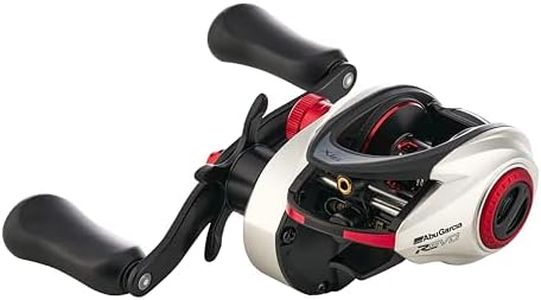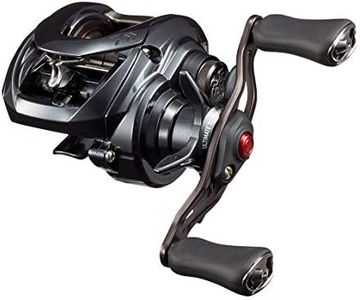We Use CookiesWe use cookies to enhance the security, performance,
functionality and for analytical and promotional activities. By continuing to browse this site you
are agreeing to our privacy policy
10 Best Baitcaster Reels
From leading brands and best sellers available on the web.Buying Guide for the Best Baitcaster Reels
Choosing the right baitcaster reel can make your fishing experience smoother and more enjoyable. Before making a decision, think about where you'll be fishing, what type of fish you're targeting, and your level of experience with baitcasting reels. A properly chosen baitcaster gives you better casting control, more power when reeling in, and can handle larger fish more efficiently than spinning reels. Understanding each key feature will help you select a reel that truly matches your needs.Gear RatioGear ratio refers to how many times the spool rotates with one turn of the reel handle. It is important because it affects how quickly you can retrieve your line. Lower gear ratios (5:1 to 6.4:1) mean slower but more powerful retrieves, ideal for pulling heavy lures or fighting strong fish. Medium gear ratios (6.5:1 to 7.1:1) offer a balanced reel suitable for most situations. Higher gear ratios (7.2:1 and up) retrieve line faster, which is useful when you need to quickly bring in slack or use techniques that benefit from speedy retrieves. Choose a gear ratio based on your fishing style: slower for power and big lures, faster for techniques that need quick line pickup.
Braking SystemThe braking system in a baitcaster reel helps control the speed of the spool during casting, reducing the chance of backlashes or tangles. There are two main types: magnetic and centrifugal. Magnetic brakes are easier to adjust on the fly and are good for beginners, while centrifugal brakes require more setup but offer fine control for advanced users. If you are new to baitcasting, go for easily adjustable brakes to make learning easier, but if you like to tweak your cast, centrifugal systems may suit you better.
Drag SystemThe drag system controls how much resistance a fish feels when pulling on your line. This is crucial when fighting larger fish—too loose and you'll lose control, too tight and the line might break. Drag is measured in pounds, indicating the maximum resistance it offers. For smaller fish, a lower drag is fine, but if you plan on catching larger, stronger fish, look for a higher maximum drag. Make sure the drag adjusts smoothly, as this will help you protect your line during unexpected runs.
Spool Size and Line CapacitySpool size determines how much line the reel can hold, which affects how far you can cast and how much line you have available when a fish makes a long run. Larger spools can hold heavier lines or more length, good for big water and large fish. Smaller spools are lighter and suitable for finesse techniques and lighter lines. Choose a spool size based on the type of water you'll be fishing and the size of fish you expect to catch.
Reel WeightThe weight of the reel affects how comfortable it is to hold for long periods and the overall balance of your fishing setup. Lighter reels create less fatigue and are better for long days on the water, while heavier reels can sometimes feel more robust and powerful. Think about how long you fish and whether comfort is a top priority, especially if you like to move around or cast frequently.
Frame MaterialThe frame material impacts the reel’s durability and weight. Common materials are graphite (lightweight and corrosion-resistant, perfect for freshwater or casual angling) and aluminum or alloy (stronger and tougher, better suited for heavy-duty use or saltwater fishing). If you fish mainly in freshwater and prefer a lighter setup, graphite is a good choice, but if you plan on fishing in tough conditions or chasing big fish, go for a metal frame.
Handle and Knob DesignThe handle and knob design determines how comfortable and effective it feels in your hand. Larger handles with grippy knobs give better leverage and control when fighting big fish, while smaller, simpler handles keep the reel lightweight. If you have larger hands or chase strong fish, consider reels with bigger, ergonomically designed handles. For casual fishing or smaller species, handle design is less critical, so pick what feels best to you.
